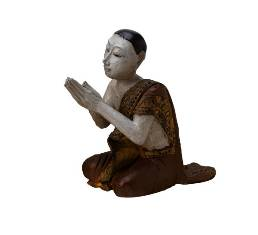Practicing Mindfulness: Putting on your Mental Shoes
Today, let's talk about Sally's recent experience with meditation. She's been practicing more and more lately, but today she didn't have time to practice her meditation before leaving the house, so she decided to do it at work. She shut her office door and set the alarm on her cell phone for 10 minutes. She pushed herself away from the computer, put both feet on the floor, sat up very straight, closed her eyes and began following her breath. She barely made it through one in-out breath cycle before a thought came in. She got caught in the thinking about the thought for a bit, started worrying, and then brought her attention back to her breath. A second or two later, another thought came up and she began chasing that one too, planning something that she could do to "fix" the situation. Then she realized that she had drifted away from following her breath and pulled her attention back again. This pattern continued for a while. Soon her 10 minute timer went off and she returned to work.
Honestly, it was one of those meditation sessions that Sally pretty much pushed herself into because she wanted to keep her commitment to the process and she thought she might feel better afterward. Meditation is sometimes like punching the clock at the gym- whether you feel like it or not- at that particular moment, keeping the commitment to yourself is important.
After her timer went off, Sally did feel a sense of calm. She also noticed that she was able to think a bit more clearly. This phenomenon occurs because the orbitofrontal cortex relaxes when it's not stressed out by the amygdala. The amygdala is the stress response center which bombards the orbitofrontal cortex when we feel overwhelmed.
When we meditate- the orbitofrontal cortex, our executive control center which modulates emotions, social reactions, and other decision making and memory areas- gets to chill out and operate at full capacity. Thus, we are better able to operate at full capacity. We are able to think more clearly and respond the way we truly intend to respond. With a regular mindfulness practice, this relaxed, high functioning state becomes more frequent.
ChogyamTrungpaRinpoche explained to his son, SaykongMiphamRinpoche the rationale for mediation. "It's easier to put on a pair of shoes than to wrap the earth in leather".
When we meditate we help ourselves let go of the expectation that the environment (others and circumstance) will change. We realize that what we experience has much to do with the mental shoes we are wearing. The world in fact, is not wrapped in leather; to experience a less stressful reality, we practice.
Love & Light,
Dr. Regina

